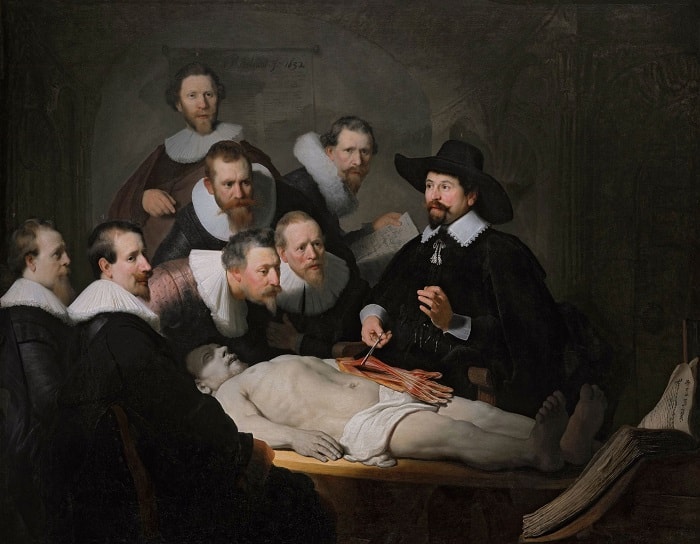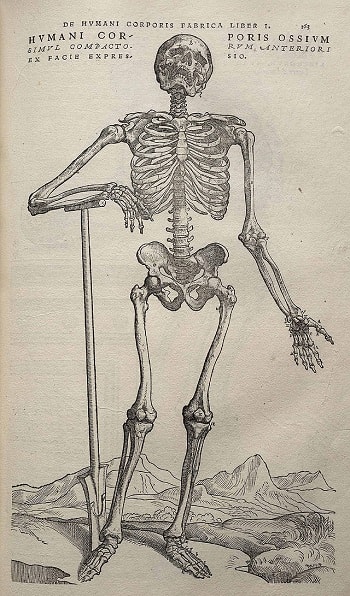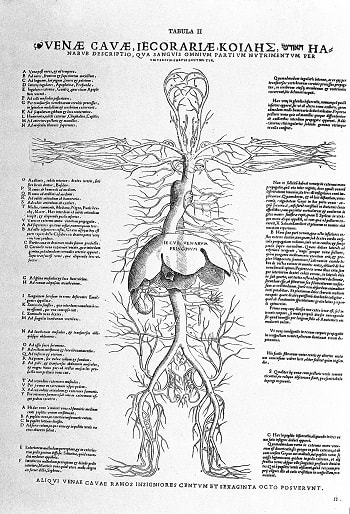What were Andreas Vesalius’ major contributions to the field of anatomy?
Andreas Vesalius made several major contributions to the field of anatomy, including the publication of his landmark work u0022De humani corporis fabricau0022 (On the Fabric of the Human Body), which revolutionized the study of anatomy by emphasizing the importance of direct observation and dissection. He also made several important discoveries about the human body, including the fact that the heart has four chambers and that the blood circulates through the body.
How did Vesalius’ approach to anatomy differ from the approaches of his predecessors?
Vesalius emphasized the importance of direct observation and dissection of human cadavers, whereas many of his predecessors had relied on the work of ancient Greek and Roman anatomists or on animal dissections. He also encouraged his students to think critically and question established beliefs about the human body.
How did Vesalius’ work influence the practice of medicine during his lifetime?
Andreas Vesalius’ work had a significant impact on the practice of medicine during his lifetime, as it provided doctors with a more accurate and detailed understanding of the human body. His emphasis on observation and dissection also helped to establish a more rigorous and scientific approach to the study of medicine.
What was Vesalius’ legacy and how did his work influence other anatomists?
Andreas Vesalius’ work had a profound impact on the study of anatomy and medicine, and his approach to scientific investigation helped to establish a foundation for modern medical science. His emphasis on direct observation and dissection continues to be an important aspect of anatomical study, and his work laid the groundwork for many later discoveries and advances in the field.
What were the controversies surrounding Vesalius and his work, and how did he respond to them?
Andreas Vesalius’ work challenged many established beliefs about the human body, and he faced significant opposition from religious and political authorities who saw his work as a threat to traditional beliefs and practices. He also faced criticism from other anatomists who disagreed with his methods or conclusions. Vesalius responded to these controversies by defending his work in public lectures and by continuing to emphasize the importance of observation and dissection in the study of anatomy.
How did Andreas Vesalius’ work influence the development of medicine during the Renaissance?
Andreas Vesalius’ work had a significant impact on the development of medicine during the Renaissance. His detailed and accurate descriptions of human anatomy helped to establish a new standard of anatomical knowledge and understanding. His work also contributed to the decline of reliance on traditional authorities such as Galen and the beginning of empirical observation and experimentation.
In July 1453, Andreas Vesalius published De humani corporis fabrica (On the fabric of the human body), known as Fabrica for short. This work consisted of seven large folio books (chapters) on the skeleton, muscles, veins and arteries, nerves, reproductive and digestive organs in the abdomen, heart and lungs, brain, and sense organs. It included 73 breathtaking, realistic illustrations along with detailed Latin text. From then on, the anatomy would never stay the same.
Who was Andreas Vesalius?

Vesalius was born in Brussels, then part of the Habsburg Netherlands, into a family with strong formal connections: his father was a court pharmacist of the Holy Roman Emperor Charles V; his mother was the daughter of a wealthy government official. Vesalius received a good education in favorable conditions at the University of Leuven, benefiting from the progressive humanism of Erasmus of Rotterdam. Erasmus favored the study of original texts—which came to Europe at the beginning of the Renaissance—in their primary languages (classical Latin, Greek, and Hebrew) instead of translations filtered through generations of Islamic scholars and medieval scholars. Because the same mistakes were copied over and over, and because people tried to update the language, the meaning was probably changed.
Vesalius’ interest in anatomy continued in Leuven. There he spent the night outside the city walls with an anatomist-inclined friend, collecting the bones of executed bodies and sneaking them into the city. This madness resulted in an extremely valuable skeleton that was almost complete. Excesses like this were necessary as dead bodies were difficult to find, the training centers had no skeletons, and Andreas Vesalius believed the body was the main source of anatomical knowledge. He finished his undergraduate thesis, which was published in 1537, and kept studying anatomy until 1538, when he moved to Italy.
In September 1537, Vesalius arrived in Padua. He received his doctorate on December 5. He was offered to lecture in surgery and anatomy by one of Europe’s most renowned medical schools. Vesalius began dissecting in front of his students the very next day.
The Making of the Fabrica

Under the protection of the Duchy of Venice, the University of Padova was one of the leading institutions of medical and surgical education. Performing at least one dissection per year in medical school—a process that took three weeks during the winter—attracted students interested in the new observational anatomy. The organs in the abdomen and then the thorax were examined. Then the head and brain, and finally the arms and legs, were studied. This ancient practice was better for the durability of cadavers. Vesalius brought two necessary pedagogical innovations to Padova, which were evident in his Fabrica.
Unlike his contemporaries, Vesalius held the knife himself, combining teaching, showing, and cutting. He refused to teach from the lectern and did not read from any other book than his body. Moreover, he did not avoid obsolete anatomical literature. His humanistic approach led him further back to the well-respected 2nd-century authority Galenos of Pergamon (Galen), rather than interpretations of Galen, such as Mondino de Luzzi’s popular 14th-century Anathomia.
Galen advised his readers to make visual comparisons between what was written and what was directly observed. Vesalius was already experienced enough to realize that Galen had acquired some of his knowledge from animals and therefore contained factual errors; these were topics to be discussed with the students. However, he continues to use animal bodies as he deems necessary.
The Tabulae for Students

Among many other difficulties, the systems running throughout the body, such as veins and arteries, had to be reconstructed part by part after dissection (following in the footsteps of Galenos, Vesalius manually picked these up as two different systems based on the liver and heart). Vesalius prepared one-to-one drawings to accompany the dissection to help his students envision the system. These drawings were later used in the Tabulae anatomicae sex of 1538; the six illustrations in the book were published in poster form and accompanied by explanatory texts.
The illustrations of the Tabulae were created by Vesalius and his Dutch friend, the painter Jan van Calcar. Calcar had been a student of the great Italian painter Titian in his studio in Venice. It was a great coincidence that Padova was close to one of the world’s leading art centers. The Tabulae became a great success. This is evident from the extensive and serial plagiarism that follows. What really pleased Vesalius was the proposal that the bodies of executed criminals be delivered to him in Padova.
In January 1540, he was summoned to Bologna to share his new method of teaching anatomy. In a presentation before an audience of about 200 people at the church of San Francesco, Vesalius was cutting the cadaver and clashed with Professor Matteo Corti, who was in charge of anatomy and reading Mondino’s Anathomia. The aging Corti despised such manual work, but Vesalius publicly corrected an error in Corti, Mondino, and Galenos and his Tabulae: the liver lacked five lobes.
Andreas Vesalius spent the next two years working on the Fabrica. He was reading Galenos and had a painter with him while he worked at the anatomy table. The drawings were made into highly detailed woodblock prints, often by gluing and traversing the painting into the wood. Woodblock printing was a great innovation in the field of printing. As it works like printing press letters, it could be printed on a page with ease. Aside from the importance of his classical Latin text, what stood out were the drawings that closely resembled reality and the imagery that gave Fabrica its essential splendor.
The Making of the Epitome
The identity of his painter, known to have come from Titian’s workshop, is unknown, but his contributions were enormous. Fabrica‘s cover page is a powerful symbol of the new Vesalius science of anatomy. The arrays of human skeletons and muscle structures are breathtaking. Each of the fourteen muscular man drawings is shown in an ongoing panoramic view, all skinned and given a stance that makes them appear as if they are still alive, even though they are all cut in layers.
After Andreas Vesalius oversaw the production process and Fabrica‘s pages were being prepared, he left Padova to go to Basel to work with the humanist teacher and publisher Oporinus. Oporinus was known for its print quality. His skill manifested itself when the book finally came out. Fabrica was the triumph of Renaissance humanism. However, it was also an expensive and luxurious piece, not something a student could afford to buy or something an on-the-job anatomist would want to touch with bloody hands. The simultaneous publication of the cheaper and shorter Suorum de humani corporis fabrica librorum epitome filled this market gap.
Some of the epitome’s dynamic leaflets were designed to be cut into pieces, and there were full-length body drawings of organs superimposed on one another. Thus, various pictures could be made in the form of flap anatomy that was popular at the time. The second corrected edition of Fabrica was printed in 1555. Vesalius spent the rest of his life in the service of Emperor Charles V, to whom Fabrica was dedicated, but planned to return to Padova before his death on the island of Zakynthos.
After Andreas Vesalius’ Death
Fabrica was simple to read and understand; this was and continues to be the book’s strength. Earlier anatomy books had few illustrations, and they were usually schematic representations of text. They were not images of what could be seen on the body, but drawings to aid in remembering. Vesalius was part of the Renaissance tradition of developing anatomical knowledge and description, but his work was a dramatic leap forward. Apart from the five-lobed liver, he corrected various anatomical errors: humans do not have rete mirable, unlike some other vertebrates (compounds of veins and arteries very close to each other); the chambers of the heart do not have pores for blood to pass through.
Vesalius’ drawings were often copied and reused in subsequent texts throughout the century. His realistic drawings could easily be corrected as new information became available. Traditionalists vilified the 28-year-old Vesalius for criticizing Galenos, but his encouragement to look at the body to find knowledge instead of the books resonated throughout Europe. Andreas Vesalius introduced the method of studying nature in anatomy, which had only recently been adopted in other observational sciences such as botany and geography. Fabrica has redefined the way we learn, teach, and think about what’s under our skin.
References
- O’Malley, Charles Donald. Andreas Vesalius of Brussels, 1514–1564. Berkeley : University of California Press, 1964. p. 311.
- See C.D. O’Malley Andreas Vesalius’ Pilgrimage, Isis 45:2, 1954
- Andreas Vesalius, De humani corporis fabrica (1544), Book II, Ch. 24, 268. Trans. William Frank Rich son, On the Fabric of the Human Body (1999), Book II, 234. As quoted by W. F. Bynum & Roy Porter (2005), Oxford Dictionary of Scientific Quotations: Andreas Vesalius, 595:2, ISBN 0-19-858409-1.
- Porter, Roy, ed. Vesalius. The Biographical Dictionary of Scientists. 2nd Ed. New York: Oxford University P, 1994.


